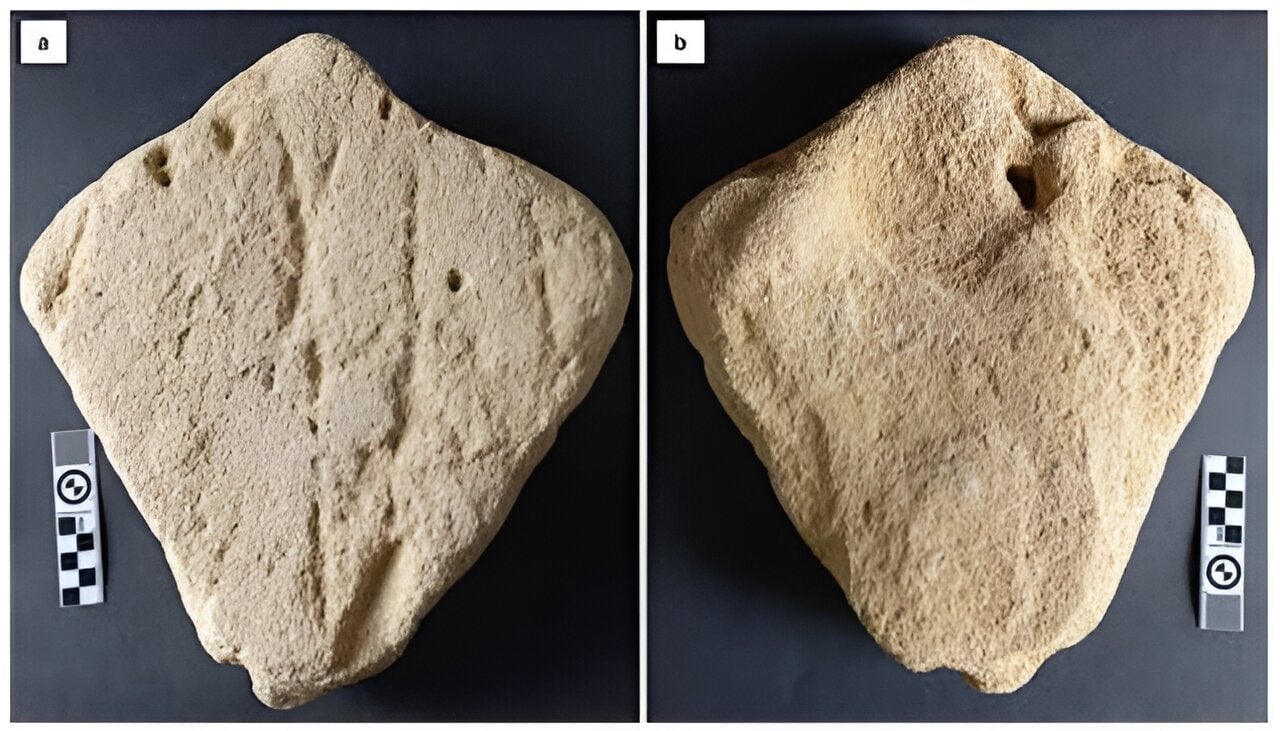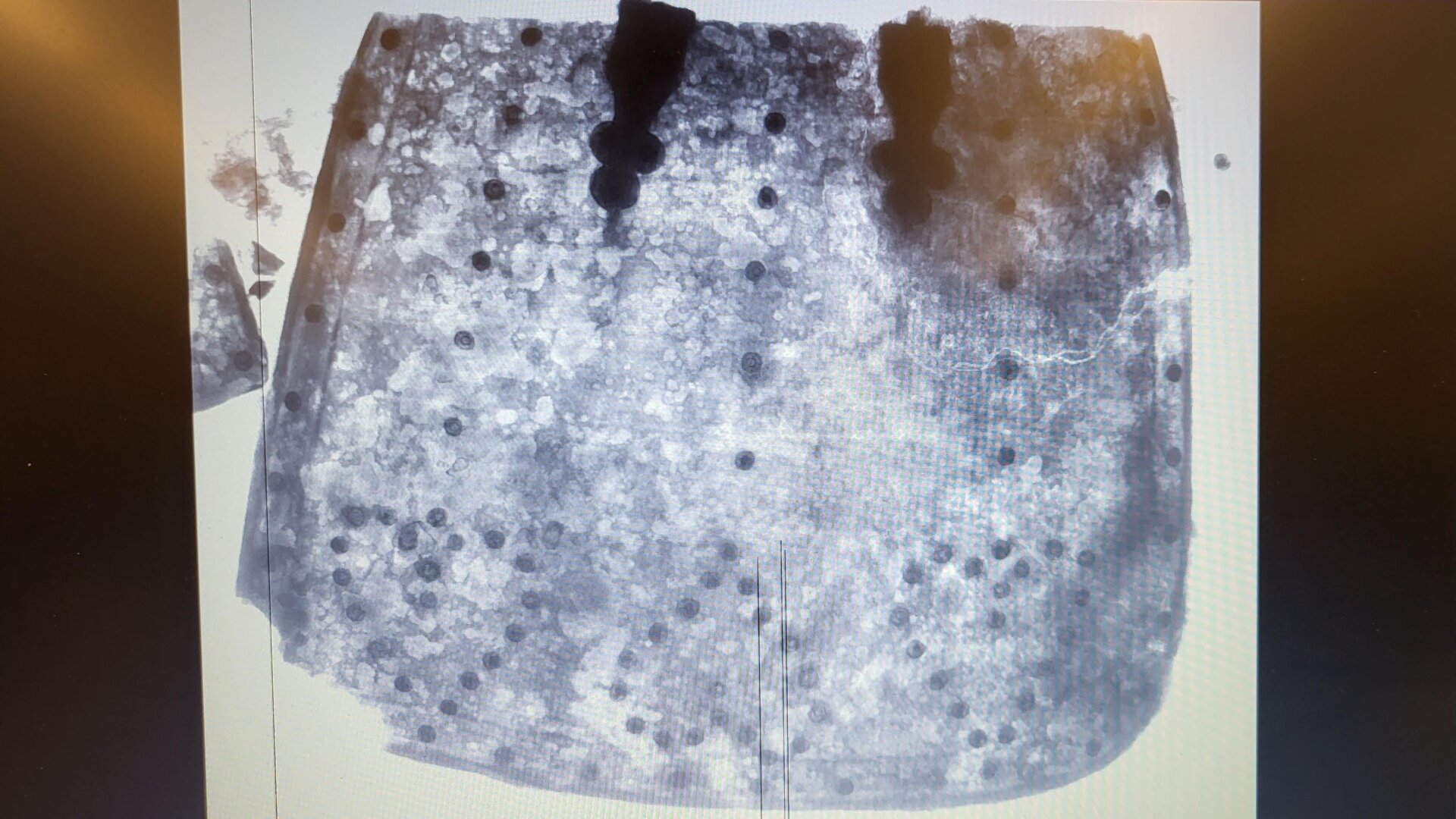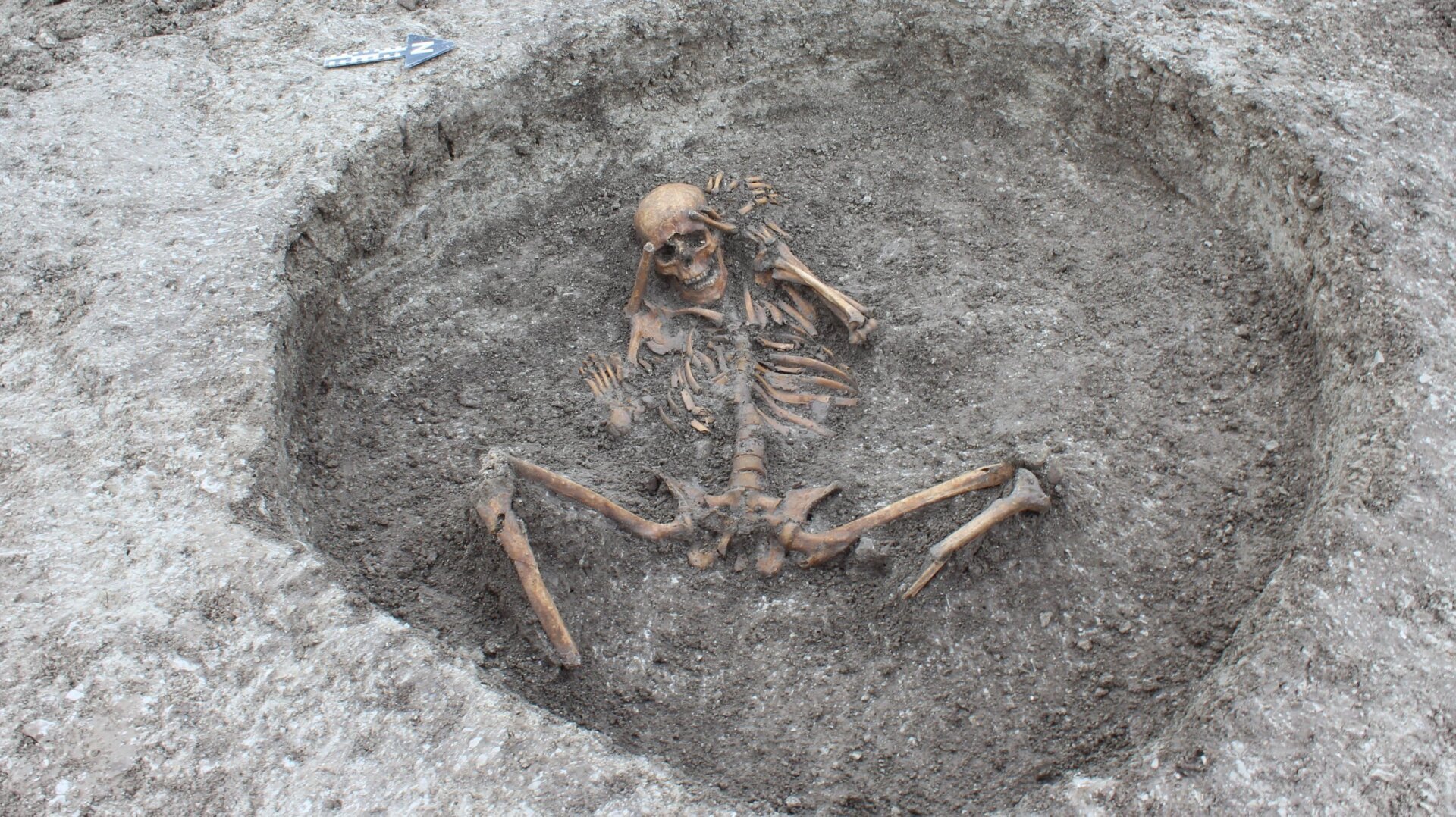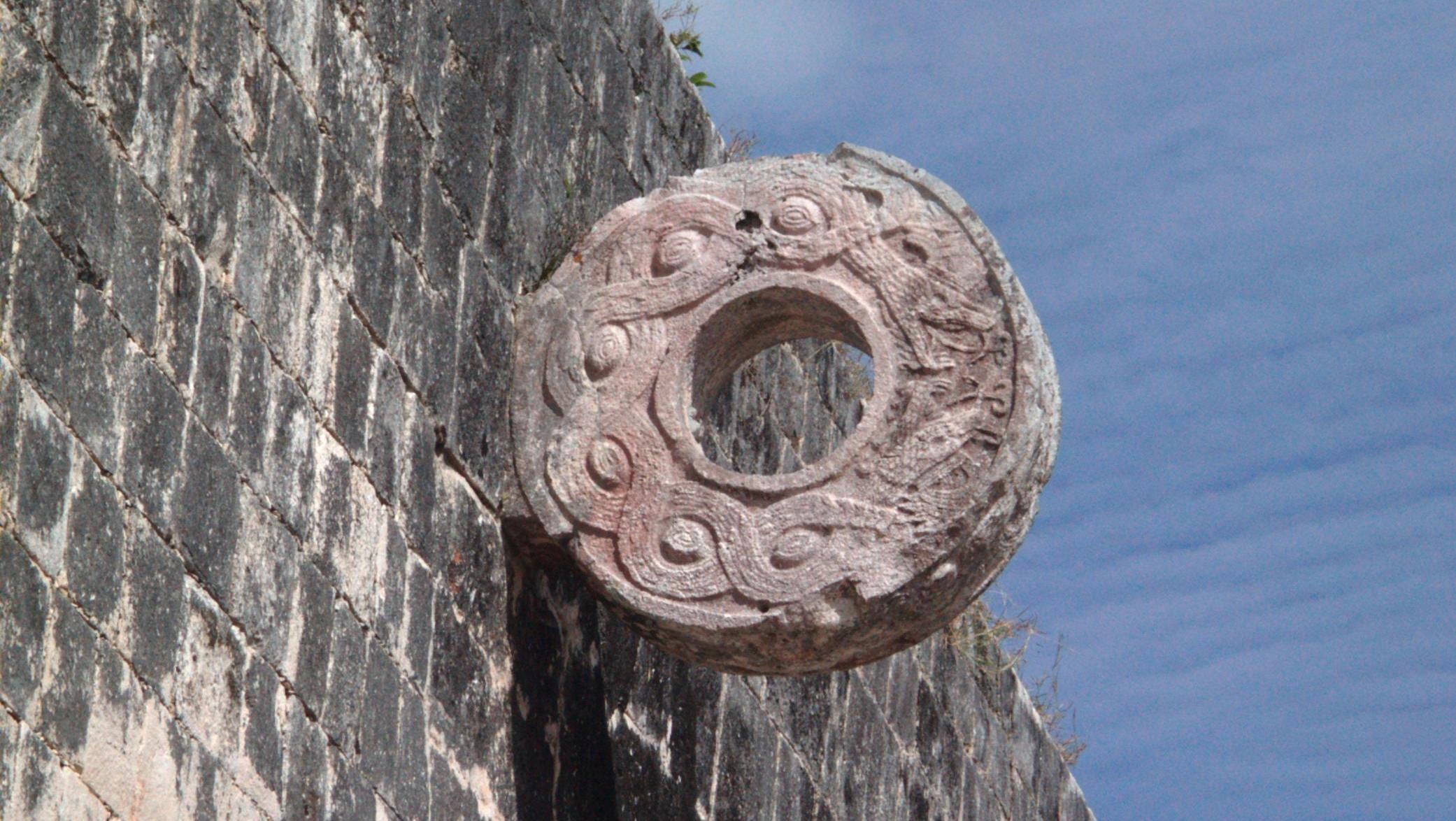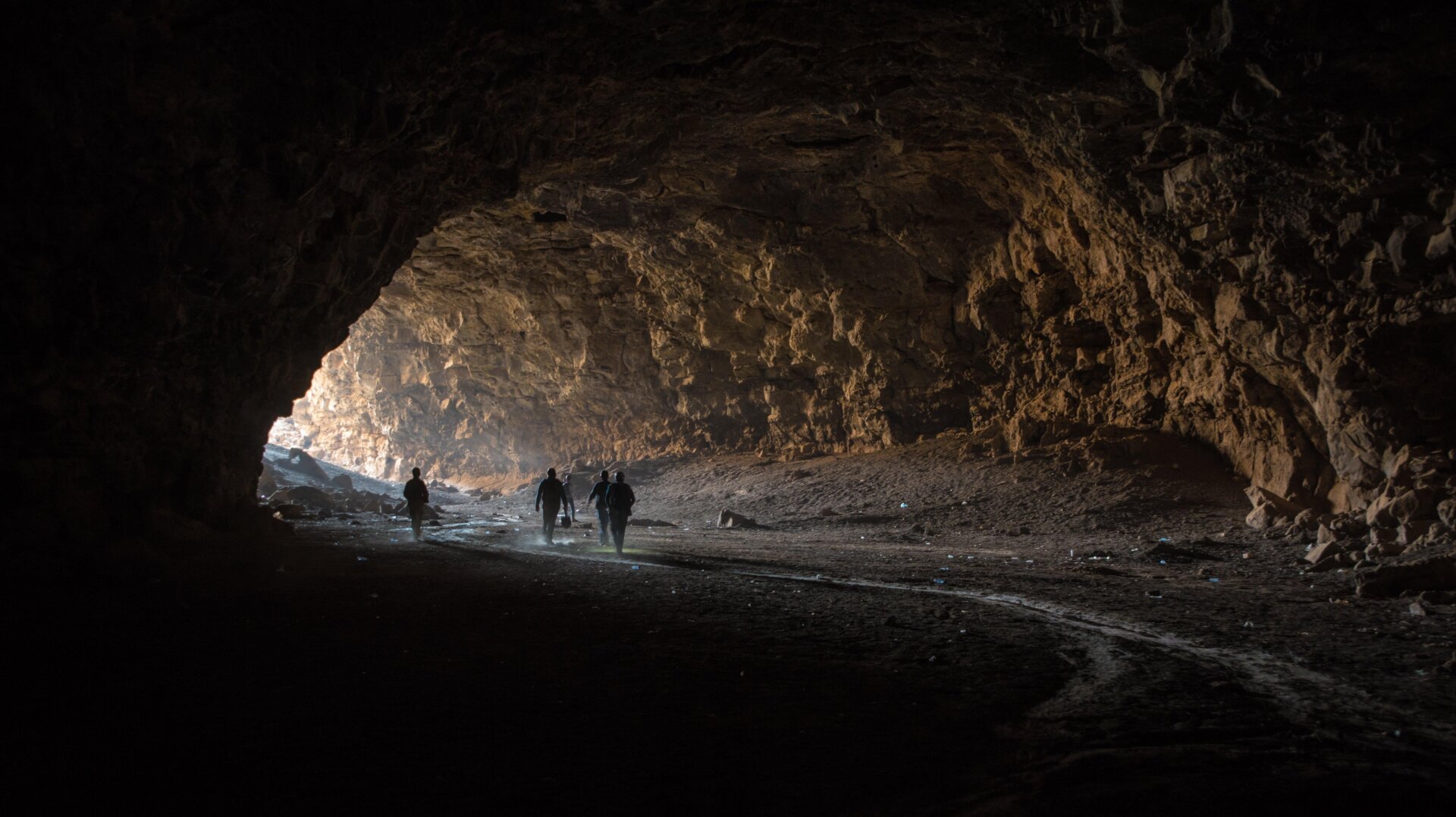Neanderthals, our closest extinct human relatives, were more sophisticated than previously thought. Recent research reveals evidence of the oldest known complex adhesive in Europe, used by Neanderthals between 120,000 and 40,000 years ago. This groundbreaking discovery, published in Science Advances, sheds light on the ingenuity and advanced cognitive abilities of these early humans.
The adhesive, a mixture of bitumen (a natural asphalt component found in soil) and ochre, was found on stone tools from the Le Moustier Neanderthal site in France. According to a recent NYU release, these findings push back the timeline for complex adhesive use in Europe significantly. The researchers believe that this bitumen-ochre compound provided a significant advantage by improving the grip and stability of handheld cutting or scraping tools.
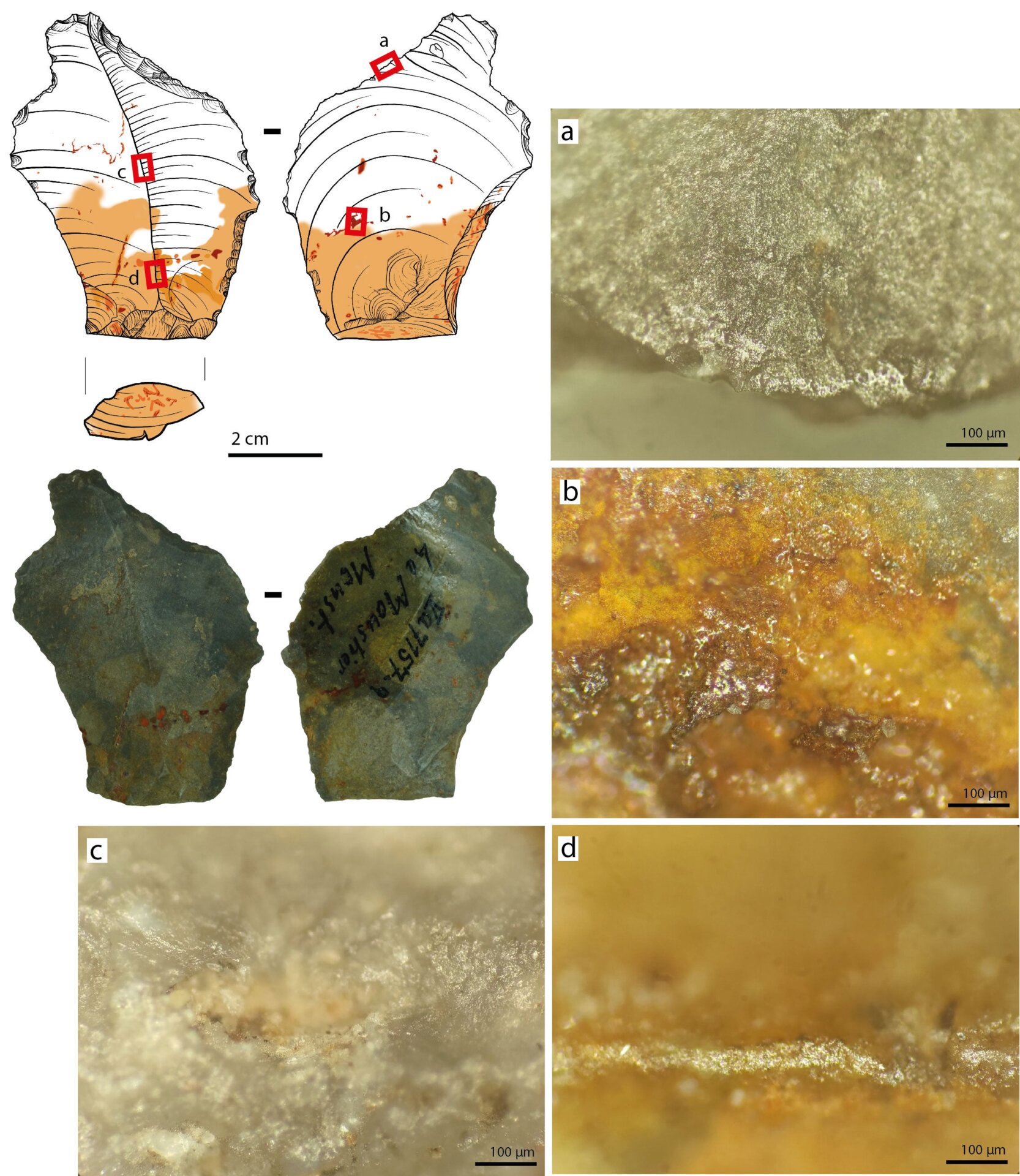 Micrographs showing wear on a Neanderthal tool.Microscopic analysis reveals wear patterns consistent with the use of an adhesive handle.
Micrographs showing wear on a Neanderthal tool.Microscopic analysis reveals wear patterns consistent with the use of an adhesive handle.
While bitumen itself possesses adhesive properties, its liquid form makes it less effective as a glue. However, when combined with ochre—the same pigment used by Neanderthals and early modern humans for cave art—it transforms into a moldable solid. The Neanderthals at Le Moustier applied this innovative mixture to various tools, including scrapers, flakes, and blades. The research team meticulously examined five such tools bearing traces of ochre: three flakes, a retouched blade, and a side scraper.
“Compound adhesives are considered to be among the first expressions of the modern cognitive processes that are still active today,” explained Patrick Schmidt, lead author of the study and an archaeologist at the University of Tübingen. This discovery further strengthens the growing body of evidence showcasing the intelligence and resourcefulness of Neanderthals, as demonstrated by their artistic creations and diverse toolkits.
 Close-up of a Neanderthal tool showing ochre residue.Ochre residue on the Neanderthal tool provides evidence of the adhesive compound.
Close-up of a Neanderthal tool showing ochre residue.Ochre residue on the Neanderthal tool provides evidence of the adhesive compound.
The bitumen-ochre mixture adhered effectively to stone but not to skin, making it ideal for creating tool handles. Microscopic imaging of the tools revealed two distinct types of wear: one indicating the working of other materials and the other suggesting wear from handling the adhesive itself. Based on this analysis, the team concluded that the adhesive was likely used to form the handles directly, rather than attaching the stone tools to separate handles.
The Le Moustier artifacts, unearthed in 1907, remained in storage since the 1960s. “As a result, the adhering remains of organic substances were very well preserved,” noted study co-author Ewa Dutkiewicz, a researcher at the University of Tübingen and Berlin’s Museum of Prehistory and Early History. This fortunate circumstance allowed for a detailed analysis of the adhesive and its properties.
Our understanding of Neanderthals has evolved considerably from earlier misconceptions. While they became extinct around 40,000 years ago, their genetic legacy lives on in most modern humans, a testament to their interbreeding with Homo sapiens. This latest discovery of their advanced adhesive technology adds another layer to the complex story of Neanderthal innovation and adaptation.
This discovery highlights the sophisticated toolmaking techniques employed by Neanderthals and provides further insights into their cognitive abilities. Their use of a complex adhesive represents a significant technological advancement and underscores their adaptability and resourcefulness in a challenging environment.




